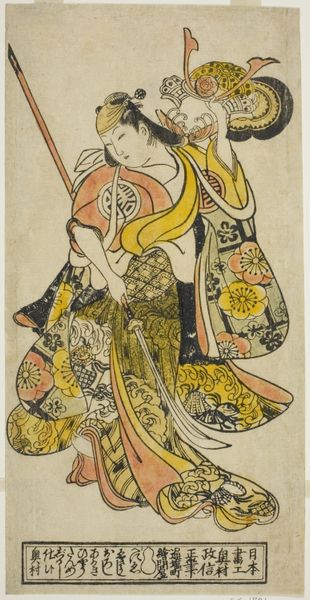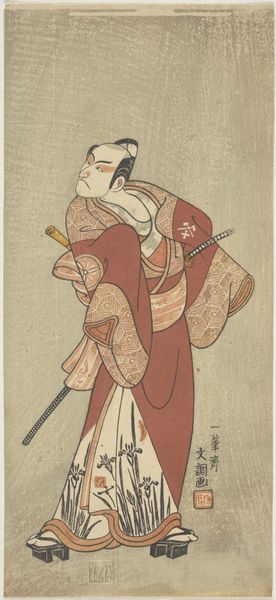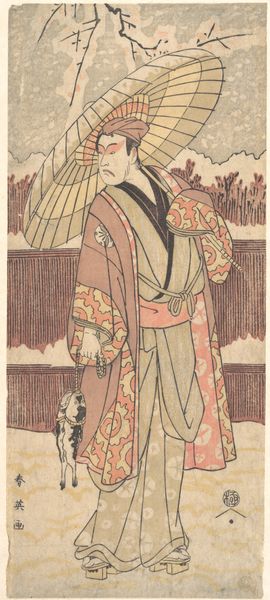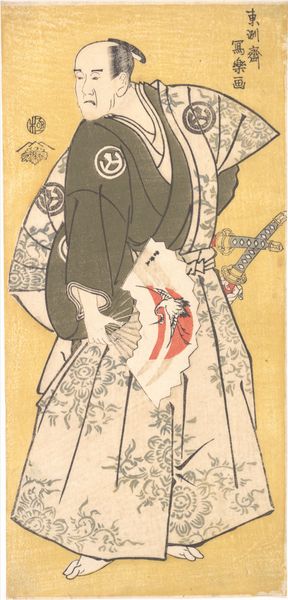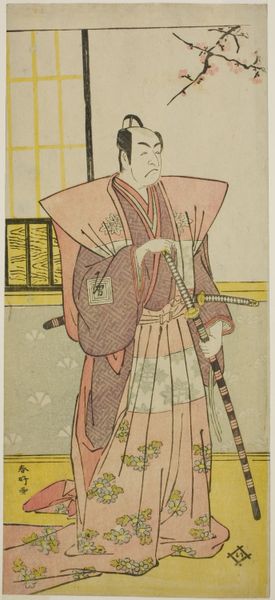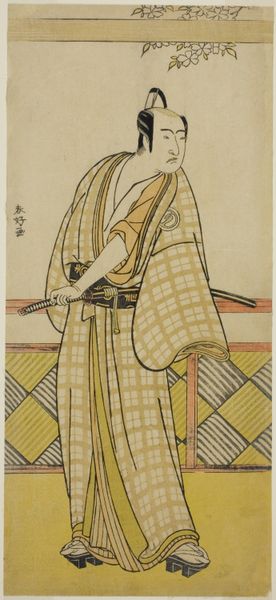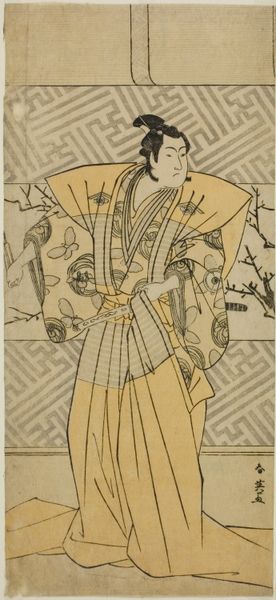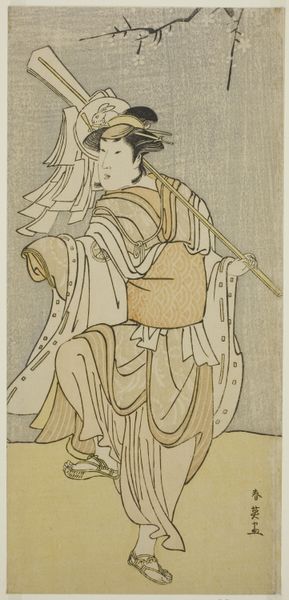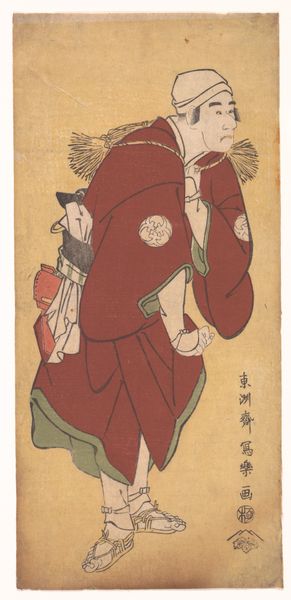
print, woodblock-print
#
portrait
# print
#
asian-art
#
ukiyo-e
#
figuration
#
woodblock-print
#
genre-painting
Copyright: Public domain
Curator: Before us is “The Actor Ichikawa Yaozō III,” a woodblock print crafted in 1795 by Tōshūsai Sharaku. Editor: It strikes me immediately. There's a peculiar tension in his stance, almost coiled, amplified by the unsettling color palette. Curator: Sharaku emerged during the Kansei Reforms, a period marked by governmental austerity measures affecting Kabuki theater and its stars. His unflattering portrayals challenged the idealized depictions common at the time. This piece particularly demonstrates the actor Ichikawa Yaozo III holding an open fan, perhaps mid-performance. He belonged to an elite Kabuki family, enjoying tremendous popularity at the time, yet here, we observe what appears to be an unsentimental likeness. Editor: Yes, look at the asymmetry: his posture, his intense gaze directed off to the side. It creates this really strong, directional pull—destabilizing, even. The textures and colors are unexpectedly layered: a pale gold backdrop with overlaid checkered and floral designs against the actor's multiple kimono layers and exposed white-painted feet, really push and pull within the image. The flatness is almost a method for accentuating what reads like a state of imbalance, visually and emotionally. Curator: Sharaku only produced portraits of Kabuki actors and sumo wrestlers, focusing, seemingly, on those pushing at the established artistic norms. Considering the Edo era’s rigid social hierarchies and sumptuary laws regulating the types of fabrics or embellishments people could display, it’s thought the pink and gold designs signify not his true outfit, but denote his artistic flair. It really adds to the tension you observed and perhaps serves as silent commentary of those same social pressures. Editor: What's also interesting to me is that, as a print, this work exists in multiples. And its creation relies on a collaboration among the artist, the carver and the printer. It democratizes the consumption of such powerful portraits by putting Kabuki actor portraits within economic reach, making accessible at multiple social levels what were previously only observed on stage. Curator: His ability to capture these tensions in such a novel way, in portraiture specifically, remains really unparalleled. We’re very lucky to be viewing this historical and aesthetic enigma today. Editor: Absolutely, to witness that tension, rendered with such striking asymmetry and historical weight, has definitely shifted my perception of Ukiyo-e prints as portraiture.
Comments
No comments
Be the first to comment and join the conversation on the ultimate creative platform.
